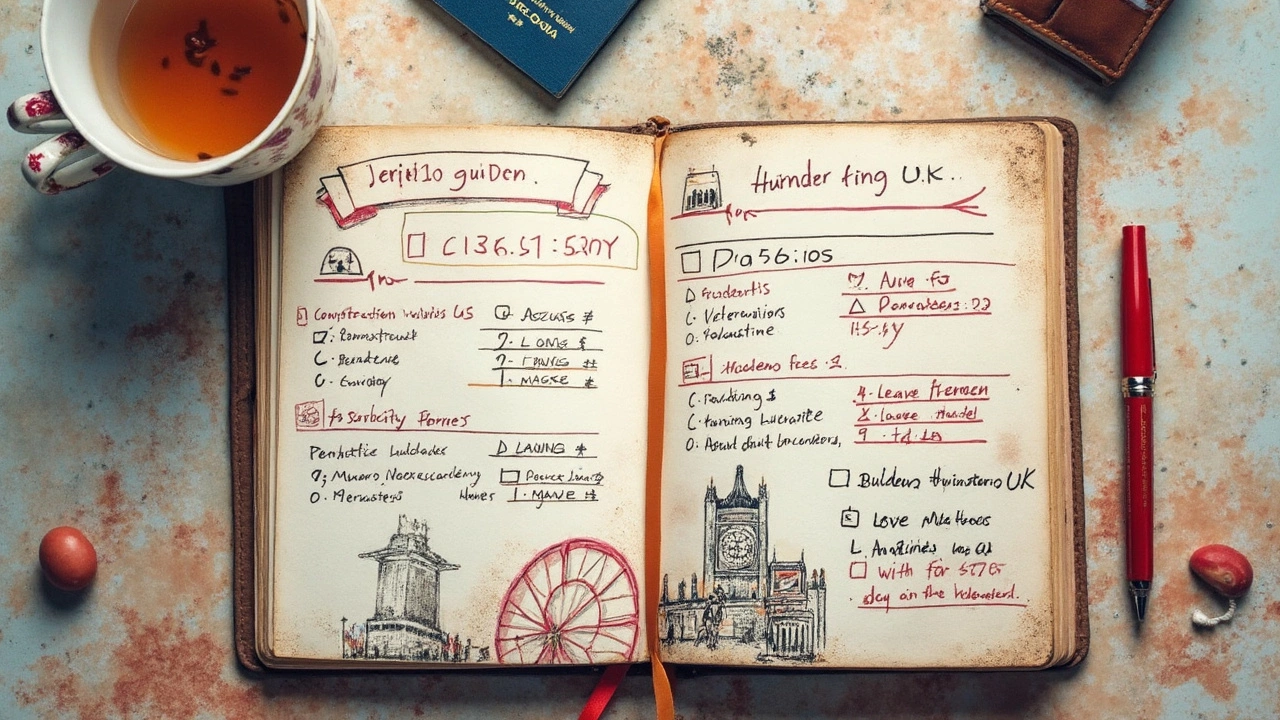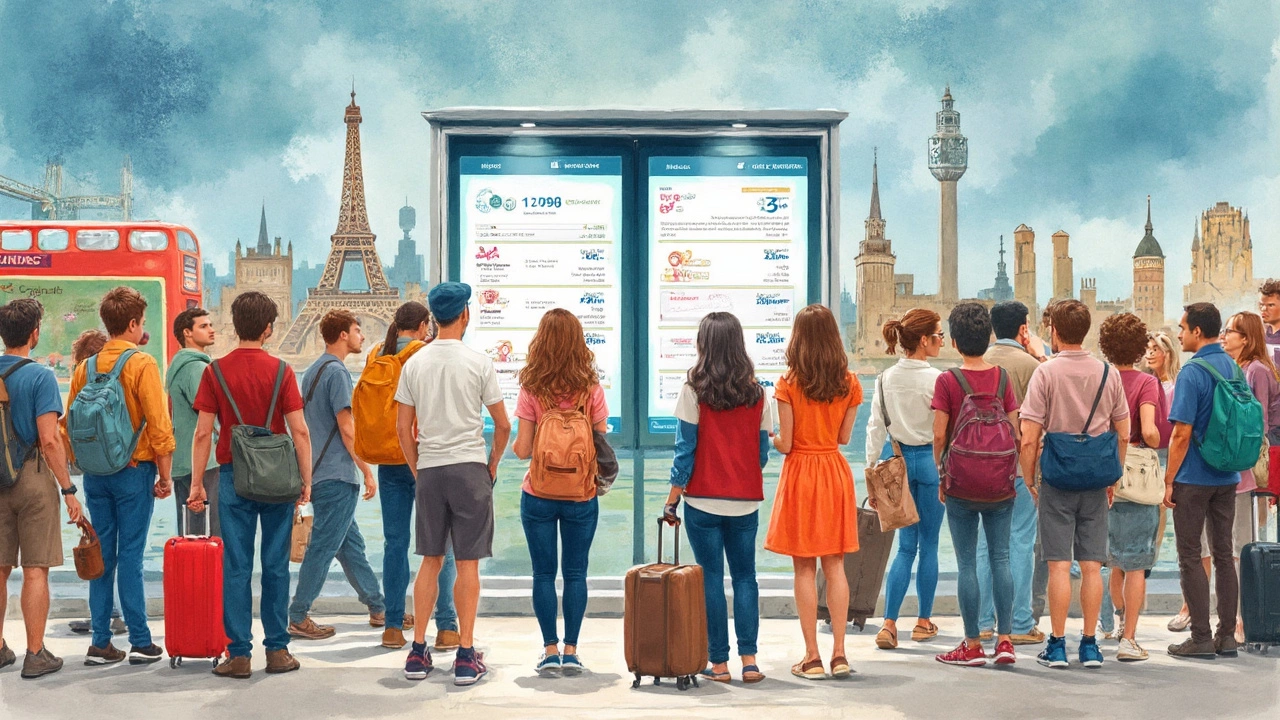Ever wonder if guided tours are actually a bargain, or if you're just paying for the easy route? Tons of travelers secretly ask the same thing, especially when that glossy brochure promises “value.” The answer isn't as clear as yes or no—it depends on where you're going, what’s included, and how you’d plan things on your own.
Here's how it works: guided tours usually bundle the costs of hotels, transportation, tickets, and sometimes even meals. So you get one price instead of juggling a stack of bookings. Sometimes, this all-in-one approach can genuinely save you money, especially if the tour company has bulk deals with hotels or gets group discounts. But not every tour is a steal, and what looks cheap at first can sometimes balloon with extras.
It also comes down to how much legwork you're willing to do. If the idea of tracking down every ticket and local bus route sounds like a headache, a tour saves you time and a few gray hairs. But if you’re the DIY type and willing to do some digging, you might uncover cheaper or more flexible options on your own. The secret? Knowing what’s included, what’s not, and how the numbers stack up on both sides.
- What Goes Into the Price of a Guided Tour?
- Comparing DIY and Guided Costs: Surprising Differences
- When Are Guided Tours Actually Cheaper?
- Hidden Discounts and Unexpected Expenses
- Tips to Get the Best Value on Tours
What Goes Into the Price of a Guided Tour?
When you see a price tag on a guided tour, it's not just a random number—there’s actually a pretty clear breakdown behind it. The cost covers a bunch of core things, all bundled so you don’t have to chase them down one by one.
Here’s what typically makes up the price:
- Accommodation: The tour usually includes hotel rooms or sometimes hostels, depending on the style of the trip. Big tour companies often get better rates because they book a lot of rooms at once.
- Transportation: Buses, trains, flights, or even boats—whatever you’ll need to move from one spot to another is factored in. This can mean private coaches or shared transport, so make sure to check which it is.
- Guides: You’re paying for someone to handle the details, answer questions, and give you info you’d miss wandering on your own. Good guides can honestly make or break the trip.
- Entrance Fees and Activities: Big-ticket sights, museums, landmarks, and sometimes special experiences (like a cooking class or show) get lumped into the cost. This is where guided tours sometimes pull ahead, since they often can skip lines or get better time slots.
- Meals: Some tours cover most meals, while others only throw in breakfast or the occasional group dinner. Check this line item, since food adds up fast.
That’s the standard stuff. There’s also a portion that goes to the tour company for handling the planning, their staff, and running support in case something goes wrong while you’re traveling. Nobody loves admin fees, but someone's got to organize things. If you see prices that seem unusually low, double-check—you might find accommodations are basic, meals aren’t included, or there’s a stack of optional extras not covered in the base price.
The most important thing: when it comes to guided tours, what you get for your money can vary a lot depending on destination and company. Always ask for a detailed list of what’s covered before booking, so there are no surprise costs or awkward moments later. It’s the fastest way to know if that “deal” is actually worth it.
Comparing DIY and Guided Costs: Surprising Differences
Okay, so let’s talk numbers. A lot of people just look at the sticker price on a guided tour and compare it to what they think travel should cost. Reality check—putting together a trip on your own isn’t always as cheap or easy as it sounds, especially in places where public transport is confusing or attractions are spread out.
With guided tours, you’re paying for way more than just entry tickets or a hotel. The price tag usually covers:
- Accommodation (sometimes at fancier spots than you’d pick solo)
- Transport from place to place
- Tickets to key sites
- Local guides
- Some meals (occasionally all of them)
- Pre-arranged schedules and logistics
If you try to do it yourself (DIY-style), you’ll need to add up:
- Hotels (booked individually, sometimes without discounts)
- Trains, buses, or rental cars (plus fuel and tolls)
- Tickets—often at the walkup price, not the group rate
- Meals (which can vary a lot in cost and quality)
- Time spent planning (which doesn’t show on your credit card, but matters!)
Let’s get specific. Here’s a quick table comparing typical per-day costs for a one-week trip in Italy (2024 prices):
| Expense | Guided Tour (per day) | DIY (per day) |
|---|---|---|
| Accommodation | $80 | $70 |
| Transport | $30 | $40 |
| Sightseeing Tickets | $25 | $35 |
| Meals | $25 | $30 |
| Guide Fees | Included | $10 (occasional tours) |
| Other Costs | $10 | $10 |
| Total | $170 | $195 |
This table isn’t set in stone, but it gives you a ballpark for what you might spend. Notice how tours sometimes look expensive upfront, but all those little DIY extras (and less access to group discounts) can sneak up on you fast. In countries where logistics are tricky—think Egypt or rural Vietnam—a guided package often ends up trending cheaper and much less stressful.
But here’s another twist: if you really rough it, stay in hostels, eat street food, and skip paid experiences, going solo can save you a ton. On the flip side, if you want convenience and extras, tours often win on value, not just cost.

When Are Guided Tours Actually Cheaper?
There are times when signing up for a guided tour really does save you cash compared to piecing everything together yourself. This usually happens on trips that are complicated to organize, places where group rates make a big difference, or destinations where transport is tricky for outsiders.
In spots like Egypt or Peru, guided tours often include things like direct access to famous sites, entry fees, private guides, comfy buses, and sometimes even meals. By pooling a bunch of people together, tour companies score deals on hotels and tickets that solo travelers just never see. Asia, Eastern Europe, and Africa are full of these group bargains. And it’s not just sightseeing—think wildlife safaris, food tours, or multi-city trips with packed itineraries. Suddenly, that group rate starts to look pretty sweet.
Another big break? Expensive destinations like Iceland, where car rentals and hotels are overpriced. Here, a group bus tour can be hundreds cheaper per person than renting vehicles, booking rooms, and snagging all the big-ticket attractions yourself. These price drops are mostly visible when:
- The destination is remote and public transport is weak or pricey.
- Entry to certain attractions requires guides or hard-to-get permits (Machu Picchu, Chichen Itza, certain national parks).
- The itinerary covers a lot in a short time—saving hassle and extra travel costs.
- You’re traveling solo and single supplements are lower on group tours than booking your own room everywhere.
It’s not just about the price tag, either. Some guided tours throw in behind-the-scenes access—like an after-hours museum tour or a cooking experience you can’t book alone. Do a head-to-head comparison: add up everything you’d pay flying solo, and see if the group price (including extras) actually wins out on value. You might be surprised how often it does, especially once you factor in time saved and hassles dodged.
Hidden Discounts and Unexpected Expenses
Let’s be honest, getting a deal on a guided tour sometimes feels like hacking the system. But there are real tricks to getting those sneaky discounts—and a few price traps you’ll want to avoid.
- Early booking often means lower prices. A bunch of major tour companies, like G Adventures and Trafalgar, give 10–20% off for people who book months in advance. The catch? Last-minute deals also happen, but you risk the tour filling up.
- Student, senior, or group rates can knock prices down even more. Intrepid Travel, for example, cuts up to 15% for students and big groups. Always ask—these deals aren’t always front and center on their website.
- Flash sales and email sign-ups can unlock extra savings. Some operators give secret codes to email subscribers or post them in pop-up promos for signing up.
But watch out for the hidden stuff that jacks up your bill. Here’s what trips up a lot of travelers:
- Exclusions: That "from $999" price? It probably cuts out park entrance fees, some meals, and drinks at dinner. Expect to shell out for tips (sometimes €2–5 per guide, per day) and optional excursions. Check the “what’s not included” fine print.
- Single supplements: Traveling solo? Some tours charge extra for your own room—you could pay 25–50% more than the base cost.
- Currency fluctuations and local taxes: If you’re paying in a different currency or at the destination, actual prices might sneak up due to conversion rates or added local taxes. Look out for the line labeled “local payment” in some tour breakdowns.
Check out some real numbers from recent tours:
| Tour Provider | Advertised Price | Common Extras | Early Booking Discount |
|---|---|---|---|
| G Adventures | $1,199 | Meals, tips, entrance fees | 15% |
| Intrepid Travel | $1,050 | Single supplement, optional tours | 10% |
| Trafalgar | $1,350 | Drinks, extra activities | 20% |
The key is this: Don’t just look at the flashy starting price. Make a quick list of likely extras—and see if you can snag a hidden discount before you book. You’ll end up with a way more accurate idea of what your guided tours adventure will really cost you.

Tips to Get the Best Value on Tours
Getting the most bang for your buck on guided tours isn’t just about chasing the lowest price; it’s about knowing exactly what you’re getting and how to avoid surprise charges. Some tour operators advertise low upfront prices but pile on extra costs for things like entrance fees, meals, or even basic transportation, so always ask for a detailed breakdown.
- Book early for deals. Tour companies often offer early bird prices or discounts when you grab your spot well in advance—sometimes up to 20% off.
- Travel off-season. You’ll find way better rates and small groups outside peak travel times (like avoiding Europe in July or Southeast Asia during winter holidays).
- Compare what’s truly included. Some guided tours fold airport pickups, meals, skip-the-line tickets, and local guides into the price, while cheaper tours leave you stranded doing the work yourself. Double-check all inclusions versus add-ons.
- Use local operators. International agencies often outsource to local companies who run the show anyway, so booking with the source in the destination can save you a chunk of cash—sometimes 30% less than big-name providers.
- Look for hidden fees. Ask about mandatory “service charges,” entrance fees, or tips that could catch you off guard and wreck your budget.
- Group size matters. Smaller group tours usually cost more, but you get better access and service. Larger groups are cheaper but can feel rushed or generic—decide what details you care about.
- Ask for discounts. Students, seniors, or loyal customers often get price cuts, but you have to pipe up and ask; sometimes it’s as simple as showing your student ID or joining a loyalty club for free.
One more tip: Watch for flash sales, and always sign up for your favorite operators’ email lists. These companies throw out last-minute deals to fill empty spots, especially right before departure. Timing can make a huge difference, so if your travel dates are flexible, keep your eyes peeled.
